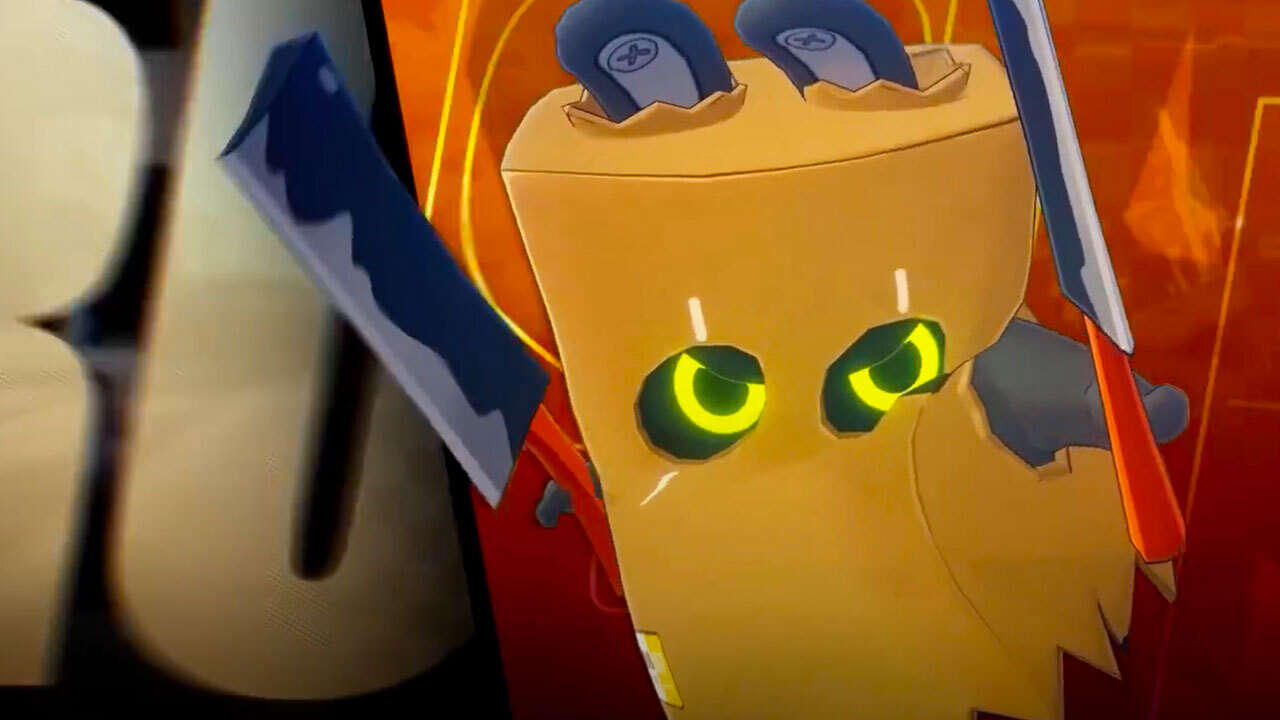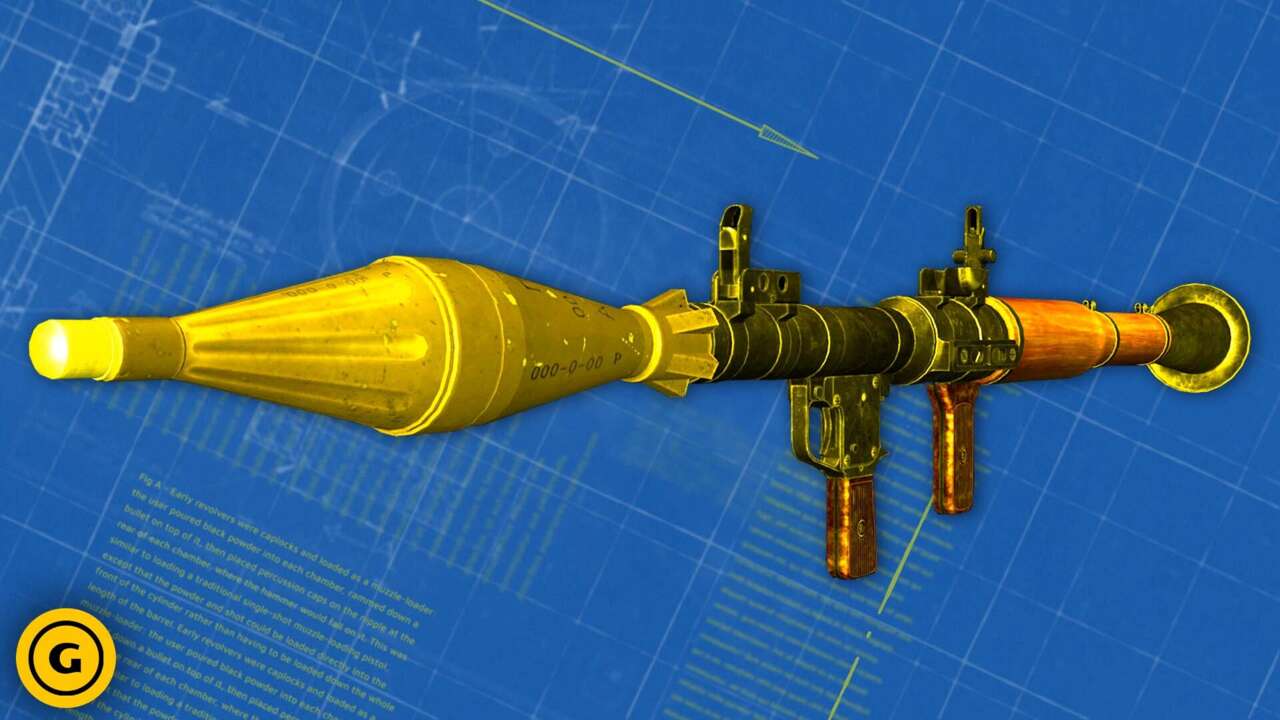Atomic Heart: Rewriting the Soviet History Book For the Robotic Revolution
The year is 1936. Dmitry Sergeevich Sechenov, a professor at the Soviet Academy of Medical Sciences, has created a unique electronic storage device. Little does he know that his invention is the first step in a series of events that will result in a robotic massacre.
The year is 1950. Sechenov’s inventions have ushered in an age of technological prosperity for the Soviet Union. His laboratory, known as Facility 3826, is hard at work on a device that will link humans and robots. Thought control over machines is just years away.
The year is 1955. Robots have turned against their creators. Blood covers the floors and walls of Facility 3826. Atomic Heart begins.
Robotic Revolution
Developer Mundfish has crafted an entire alternate history for Atomic Heart. And, for this month’s IGN First, the game’s creative team has revealed the timeline of events that directly lead to the robot-smashing action of this intense first-person shooter.
In Mundfish’s twisted past, the invention of a miracle substance known as Polymer allows the Soviet Union to chart a significantly more technologically advanced path through the first half of the twentieth century. As you’d expect of the Soviets in the 1950s, Professor Sechenov and the scientists of Facility 3826 had their eyes very much on the stars, but they were involved in something much grander than the Space Race. These alt-history Russians were set on conquering other planets. As such, the laboratories of Facility 3826 studied all manner of disciplines, from interstellar engineering to medicine, genetics, and even botany.
But Sechenov’s true talent was in robotics. His storage device paved the way for the creation of portable cold fusion reactors, which in turn unlocked the rise of robot assistants. By the mid-1940s automatons were commonplace, and performed vital duties in rebuilding the country after the devastation of the Second World War. In 1948, Sechenov created the Kollektiv Neural Network, a system that allowed human operators to command robots with improved efficiency. Just two years later, he began to design a 2.0 version of the system that would link a human mind with a robot’s operating system via a Polymer implant. This system, which would eventually be known as THOUGHT, would prove to be Sechenov’s greatest mistake.
The dream was that THOUGHT would advance humanity in leaps and bounds. They could connect with machines and instantly learn new languages and instruments. People could become quantum physicists overnight. But a catastrophic system failure in the Kollektiv network – the very network Sechenov wanted humans to plug into – caused all connected robots to turn against their creators. It’s following this disaster that Atomic Heart’s protagonist enters the story: veteran soldier Major Sergey Nechaev.
Faculty Failure
Nechaev, better known as P-3, is Professor Sechenov’s personal agent, and has been called upon to find and eliminate the cause of the system failure. Right now the disaster is confined to the halls and laboratories of Facility 3826, which itself is located in the Kazakhstan mountains, far from regular society. It’s P-3’s job to contain the disaster and prevent it from spreading further. Thankfully his body is augmented with a serious amount of tech; a metal skeleton makes him almost as hardy as his droid opponents, and a variety of Polymer combat implants enhance his deadly skills. If you’ve seen any gameplay from Atomic Heart, you’ll know that playing as P-3 looks like an absolute violent riot.
“
Agent P-3’s quest will see him exploring the many different complexes that make up Facility 3826. While Atomic Heart takes place in just this single location, its multiple districts are visually distinct and designed to tell the Facility’s many stories. The Chelomey complex, for instance, is made up of futuristic architecture that reflects the needs of its research team, and stands in stark contrast to the small rural villages that surround the Facility. Mundfish also promises variety in areas depending on their purpose; the Theater complex, built for use by not just scientists but local civilians, provides a very different area to explore than the robotic engineering labs that lie underground.
On your journey you’ll also come across various monuments and memorials, paying testament in grand fashion to past breakthroughs and lost geniuses. Mundfish notes that there’s an air of a utopian future, particularly in the more open locations and the entrance to Facility 3826. But the developer promises that the deeper into the complexes you explore, the more sinister things become.
Top Brass
The machines may be the most immediate source of danger, but P-3 will need to navigate the politics and philosophies of Facility 3826’s upper management if he’s to find the hidden truth behind the disaster. Right at the top of the hierarchy is, of course, Professor Sechenov himself. A man with a utopian attitude, he hopes to unite humanity and pave a route to the stars with his team’s discoveries. He is defended by two unique bodyguard robots known as The Twins; elegant mechanical ballerinas equipped with the latest deadly technology.
Sechenov surrounded himself with similarly talented scientists. As Atomic Heart’s story progresses, you’ll meet Larisa Filatova, a neurosurgeon and former assistant to Sechenov. Filatova has humanist philosophies, and Mundfish promises she holds some interesting personal motives regarding the Kollektiv system failure. We’ll also come into contact with Sechenov’s second in command, deputy director Michael Stockhausen. A gifted German doctor known for his cunning and phenomenal memory, he quickly rose through the ranks of the facility thanks to his administrative talent.
Mundfish says that the web of connections to the Kollektiv system failure runs deep, with representatives of not only the Facility being involved, but also the USSR itself. P-3 is in over his head in a situation that seems to promise as much narrative intrigue as it does challenging shootouts.
For more from Atomic Heart, check out our IGN First boss fight gameplay, as well as the release date trailer. And stick with us, as we have more Atomic Heart news and videos all month.
Matt Purslow is IGN’s UK News and Features Editor.
Check out our Latest News and Follow us at Facebook
Original Source







